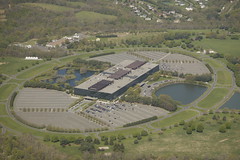
What Hath Bell Labs Wrought? The Future
In today’s world of Apple, Google and Facebook, the name may not ring any bells for most readers, but for decades — from the 1920s through the 1980s — Bell Labs, the research and development wing of AT&T, was the most innovative scientific organization in the world. As Jon Gertner argues in his riveting new book, “The Idea Factory,” it was where the future was invented.
Indeed, Bell Labs was behind many of the innovations that have come to define modern life, including the transistor (the building block of all digital products), the laser, the silicon solar cell and the computer operating system called Unix (which would serve as the basis for a host of other computer languages). Bell Labs developed the first communications satellites, the first cellular telephone systems and the first fiber-optic cable systems.
The Bell Labs scientist Claude Elwood Shannon effectively founded the field of information theory, which would revolutionize thinking about communications; other Bell Labs researchers helped push the boundaries of physics, chemistry and mathematics, while defining new industrial processes like quality control.
In “The Idea Factory,” Mr. Gertner — an editor at Fast Company magazine and a writer for The New York Times Magazine — not only gives us spirited portraits of the scientists behind Bell Labs’ phenomenal success, but he also looks at the reasons that research organization became such a fount of innovation, laying the groundwork for the networked world we now live in.
It’s clear from this volume that the visionary leadership of the researcher turned executive Mervin Kelly played a large role in Bell Labs’ sense of mission and its ability to institutionalize the process of innovation so effectively. Kelly believed that an “institute of creative technology” needed a critical mass of talented scientists — whom he housed in a single building, where physicists, chemists, mathematicians and engineers were encouraged to exchange ideas — and he gave his researchers the time to pursue their own investigations “sometimes without concrete goals, for years on end.”
That freedom, of course, was predicated on the steady stream of revenue provided (in the years before the AT&T monopoly was broken up in the early 1980s) by the monthly bills paid by telephone subscribers, which allowed Bell Labs to function “much like a national laboratory.” Unlike, say, many Silicon Valley companies today, which need to keep an eye on quarterly reports, Bell Labs in its heyday could patiently search out what Mr. Gertner calls “new and fundamental ideas,” while using its immense engineering staff to “develop and perfect those ideas” — creating new products, then making them cheaper, more efficient and more durable.
Read more . . .ᔥ
Bookmark this page for “Bell Labs” and check back regularly as these articles update on a very frequent basis. The view is set to “news”. Try clicking on “video” and “2” for more articles.







